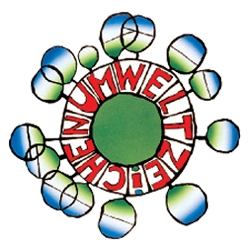von Johannes Knesl
Remmi Demmi screams Henri Lefebvre’s right to (make) the City. The heart of the City opens in the festival’s ritual’s upending of the power structure. Anarchists instill permanent play, Elias Canetti’s massive crowds make the streets common space again, re-populated with their solidarity. The sovereign’s entitlement to spectacular display of power is transferred to the urban game that represents the Fascist will to power as the moving mass that refashions all of the City as theater for the marches and the display of the national body in the stadium. After WWII a new global order entitles the Situationists to flaunt the welfare state’s reglementation in “happenings” that encounter the coopting regime of Herbert Marcuse’s “repressively tolerant” crisis-management. With global Capital and the (self)consuming public addicted to spectacularity, we become Reality TV and art becomes commercial enhancement that put critical interventions out of mind and reach. Remmi Demmi is mix-up: James Carse helps us distinguish between the “finite” games that constrain play in rules that distribute finite rewards that reproduce power, and “infinite” games that are-continued/continue-themselves in creative play that establish self-orchestrating rules to embed new freeing games in the real world.
City as game/play - and “gamer/player”.
The City is the coupling of the polarity of con-centration and de-centration - of power - in/as which the City (re)produces itself, as in-between the “athleticism” of armies of production/consumption and the rituals of ideology. Between there opens terrain for play and territory for games that realize a war economy that systematically classifies and so in fact, invents all things - agriculture, industry, nation, the individual. The City as a power-growth device makes and sustains rules for cohabitation that always go both ways, toward over-powering and mutually freeing communicational interaction. It acts as reifying/reified game board to manage the “stock” of power, including Pierre Bourdieu’s “symbolic capital”, and it is the bodily substance that is involved/involving-itself.
City as signifying/signified power.
Play comes with individuating/individuated bodies that harbor potential for a self-creativity which arises in a polarity, between the self-structuration in/of the Image and the self-structurability of the substantial that enfolds/unfolds a “self” that recognizes itself (with)in the image of all its “other.” Games objectify the other as objects of value to be incorporated and so project the terrors of devouring/being-devoured beneath which they lock up a horror: Recognizing that any selfhood has no substantiality since it exists only as/in the self-returning communication between semio-structure and the substantial bodies that goes down in the image that is of, and for, the other. Horror lurks in an abyssal exchangeability between a self that wholly depends on the other to come (in)to itself, and the other; thus the image as such haunts us ever since as infants we imitated so as so incorporate the other’s power. All of our culture is about obliterating the insubstantiality and exchangeability that now burdens, but also lightens, our coming post-human psycho-somatic make-up. Semio-capital’s political economy installs itself in games that instill and spread the terror in us of losing recognition as unique Ones.
Architecture can stream such terror - deeper than fear of getting blown to bits - in the banality of living at the pleasure of an ungraspable power structure that controls everything from its logos, writing its image - of us, of itself - into our bodies depths to get them to will live it as standing in for, as being “themselves”. The logos cannot help but driving all its subject bodies to fulfill it as the totality of the One that contains the universe inside itself. Horror rises where the City lets us feel that also any liberative play comes about in/as resistance to an over-powering semio-apparatus that re-writes the rules that determine how we recognize ourselves as “who” is unfolding/enfolding as “themselves” in-between the sign of/for the other and the subject bio-machinery. Play can amount to counter-terror that emplaces now more freely self-orchestrating bodies in new self-domains that are “hanging in there” in-between the insubstantial-virtual and the substantial-real. But there is a turn to the terminally worst when subject bodies - and the structure itself - begin to like being terrorized: It is preferable to enduring under threat of a recurrent and mutual total dissolution.
Games and plays both must draw their energy from that horrible insubstantiality. For this emptiness inside both structure and bodies propels them into a semiosis of devouring/being-devoured that totalizes to make up for the lack of ground. Our excessively underdetermined anthropology propagates the capacity to image an outside, therein an inside, by an unfolding/enfolding that goes out “of itself” to return and “secrete” itself in/as newly recovered “self.” The void drives both the semio-system and the responsivity of “its” bodies to involve them in continual struggle between excluding and revealing the void’s “excrescences” that prevent the structure from realizing itself as totally embodying/embodied unicity and keep the bodies from realizing themselves as autonomously conscious individualities. Terror is Agon and Eros that permeate the mutual semiotizing/being-semiotized between structure that wants indefinite continuity for and in itself and the bodies spinning down on “lines of escape.” Terror looms where the self cannot find a (re)centering/centered point of balance that makes an image of the void as the new generator of mutually freeing moves. Grounding without ground, the radical openness of the City affirms life as mutually liberating polarity of union/separation by encouragingly insisting on moves that place other - and self - always both inside and outside, in the real and the virtual, in immanence and transcendence. Play is what changes the rules that obtain in that imaging/being-imaged that takes place as the outgoing wavefront of the self passes through the incoming wavefront of the other as their mutual intersection: Walking down the street, the City comes into me in/as all the incoming images that the other generates between the logos and the bodies, and go out of myself with the outgoing wavefront that projects my image of the other and of myself.
City is the image that cuts/rejoins the games/plays of centering/decentering.
Understanding the image itself as game-and-play, beyond Oedipus and Anti-Oedipus, puts all that is “in (the) play” as play on bodies’ surfaces where imaging/being-imaged prefigures the passages between “inner” selfhood and “outer” other, inscribing the semio-structure’s commands and thereby enabling the bodies to re-construct the windows of their own sensibility to guide their response. Such is the image that appears to/from the point of the governing viewing/being-viewed that acts as the “empty” center of balance that directs the events. The City intensifies, multiplies, and hybridizes the (re)centerings/decenterings that allow a particular site-as-image to guide the passages and “translations” between other and self, in acting as the chaotic attractor that conducts the “eventing” in which power realizes itself. In the classical City terror emanates from - and counter-terror is defended by - a “real” center that embodies the all-signifying eye that projects its power into the dark folds of the bodies; today that center is, ungraspably, everywhere and anywhere.
Play cuts to re-establish a new continuity of status.
Liberative play cuts into the regime to stop endemic violence on all bodies and free up their substantiality to make a play for themselves to become more freely wholing/being-wohled. Semio-capital’s game cuts into bodies to cultivate them as productive substance. The City as theater for this war weaves the continuity of a spatio-temporal fabric that separates-and-reconnects the bodies and the power structure as unevenly shared sovereignty that terrorists attack in its places of assembly. The “cut” breaks in to prompt the re-joining of new spatio-temporal self-consistency that is imaged/imaging-itself in new patterns of life practice and their stories. The very drive in semio-power to become totally self-continuous, guides play to its heart, to where it encounters the body’s own imagibility in the cauldron of Julia Kristeva’s chora. Play cuts in to infiltrate the rules that engineer the “game of us” - as/in a City’s simulating/simulated continuity that validates and legitimates itself.
Micro-modularization.
Life as ubiquitous and pervasive gaming/being-gamed is propagated by massive digitalization that replaces image-driven modulation of life by a combinatorics of micro-modularization that turns everything into self-simulating procedure. The semio-modules no longer (re)present life that they instantiate but nullify any distinction between image and referent in a hyper-real self(dis)simulation, as their own status, as owning their reality, standing there as reality itself that is giving itself up in its own elemental components. Self-simulation leaves no room for the image to play forth the real as what goes down in-between the structure and the bodies. The bodies objectified in Michel Foucault’s power-knowledge nexus have been dispersed as a micro-technology of (dis)simulative graphisms that transmogrify any-thing into a module of self(dis)-simulation that leaves nothing outside of the game of calculative anticipation - of power wins and losses.
P(l)ay me in affect.
The massive and penetrating instrumenting of semio-power invalidates the classical conception of value as labor time in creating a global political economy of ever more designing/designed “experiences” that it (dis)assembles from micro-modularized units. “Affect theory” postulates that “affect-itself” is the value, that it no longer represents but simply is the real value. Play can establish “economic zones” where real life value is equated with how real bodies are-affected/affect-one-another - by way of setting up equality between semio-power coming down from the structure and going up from the bodies’. Is there a preview of this in innovation-bound “thinking work” as an uninterruptible “working-on”, self(dis)-simulation of life as endless series of modules that occupy all the spaces of the City? The fusing/being-fused of work and not-work makes play impossible because this micro-modularizes also the rules to withdraw them from play, leaving only the absent power-center to change them - to manage the crises it has cooked up. Play then deploys affect, aesthetics, to reinstitute critical distinctions that bring out the systemic rules that push the calculatedly smooth (self)exploitation of bodies and let arise the body-born(e) sensibility and life practice of a bio-economy of equal give-and-take of power, power to give life, between the semio-structure and the partial bodies. While global Capital programs the City as the most profitably “resilient” multi-functional game, play is meta-functional, its ends being at once immanent and transcendent in all that it affects/is-affected-by. To shift the massive modularization of rules and game pieces, play has to institute itself in/as the (intolerable) recognition that accepts any and all claims to self-determination as essentially equal; for only this can reveal the true nature of the power that realizes itself in the games and plays. Affect has potential to undo the rules that reduce other - and self - to objects that live within some abstractive/abstracted field and to insist on involving all of both the bodies and the structure - without reserve. This in turn ensures that plays will propagate and disperse across the whole of City’s life.
Repetition or rewind?
Simulation makes the game into terminal hyper-reality. In “Funny Games”, a father wakes up to his own body to stop the intruding self-simulations of resistance to the power-structure; but the remote control reverses the events and shows everything to be but (dis)simulation. The rewind as technical re-simulation obliterates the re-membering work of repetition in Henri Bergson’s “memory image” that re-creates the self, and other, we have lost - in a play with-and-against the rules of re-presentation. The City is as open to remembering as it is to the rewind that makes it self(dis)-simulate as authoritatively “real” basis for theatrical simulations, including “urban renewal” that rewinds us for the next investment cycle.
Can there be “strategies” for play?
There is a rabbit under the hat: the structure has agency only through the bodies: Play to feel, and recognize, all that does harm so as to let play validate all that feels liberating. This opens all being(s) to a meta-structural existence, between immanence and transcendence, in sidestepping the thrust of exploitive power to let play find and reposition the eye of the storm, moving from new lacunae in the structuring/being-structured that the bodies are living.
Play must go to the event-fields where the City is on its game.
A. The multifunctional complex, from XL to the newest minimal dwelling: Channels and containers are “streamlined" into micro-modules that make for a semio-real sea in which they can be (de)-linked in perfect resilience to let the game usurp the play of the natural self-creativity of the partial bodies. Multi-functionalism transmogrifies differentiating play into the fused blob of “working-as-gaming.” Play has to empower self-determinative individuating/being-individuated that enables the fused bodies to speak and act, for themselves.
B. The poly-nucleated metropolitan region, a dispersive/dispersed continuum of densities orchestrated by a power that concentrates and disperses:
Supposedly benign comforts of (re)centering that caters to “human scale”, that revitalizes by unification, derelict districts, that eco-themes the shopping center in simulating Mother Nature’s smile. Play needs to unmask the operative (non)center in the universal signifier of the $ that lands as the new neighborhood-size Walmart. Play reveals that the semis-structure installs a global spatial matrix of centering/de-centering that totalizes the power of semio-capital. Against the underlying liquefaction in the density and intensity of the urban space, play shifts the assigned sites and modes, of centering/decentering to direct communication between all the subject bodies as co-present and outside of the channeling rules imposed by the power-structure.
C. Events of spectacular possession: There can be no more question of what a spectacular body of urban architecture means, since it simulates itself as the event of a final manifestation of power as such, by nullifying distantiation it is inside before we ever know, and this is exactly what removes beyond any grasp. Yet such enshrining itself in its own totality transmogrifies any uniquely individuating/being-individuated to a complete interchangeability between all the acts of spectacular self-simulation. Play cuts into these totalities by freeing the “other” ways of seeing and acting as oneself that violate the seamlessness of the self-simulating image of a circus of bodies whose labors have been transfigured to pure formal power.
D. Rebranding of all “infrastructure” - physical or formal - as amenity that exploits centrality, connectivity, and scale to create new “park” where the City’s success stories can promenade to confirm the rules that obtain between the structure and its compliant bodies: The reclamation of disused tracks and highways as much as of typologies such as warehouse districts are designed to underwrite the precariat’s life style. Gated in some way, they follow Frederick Law Olmsted’s recipe for providing relief to the bodies of all the classes. Once identified as support for the top of the structure, all former infrastructure is minted into modules in a sea of laterally re-assemblable performance units in a new technification of the City body: Urban architecture functions as programmatic spatial scheduling that fosters animated activity across a City to obliterate distinctions between any-thing - infra- or supra-structure, real or virtual, structure-bound or free, working or living. The City as indifferent “program” becomes the plane on which there inscribe-themselves/are-inscribed the panoply of exchangeable figures in/as which all bodies will simulate themselves as “real” individuations.
Instead of simulative “architecture” that oppresses bodies in how it “frees” them to invent new games, we need an architecture that plays with, and in, all of the bodies - whether they can talk or not.





